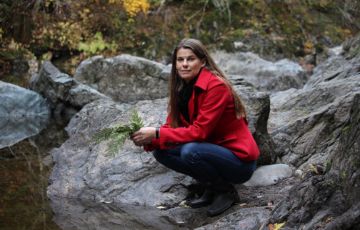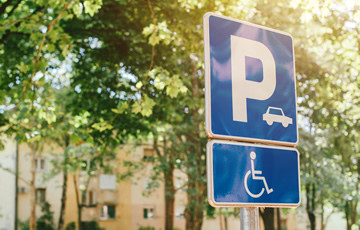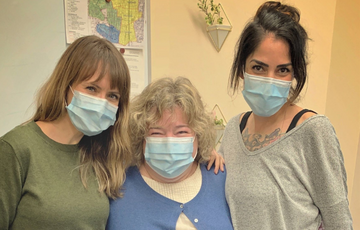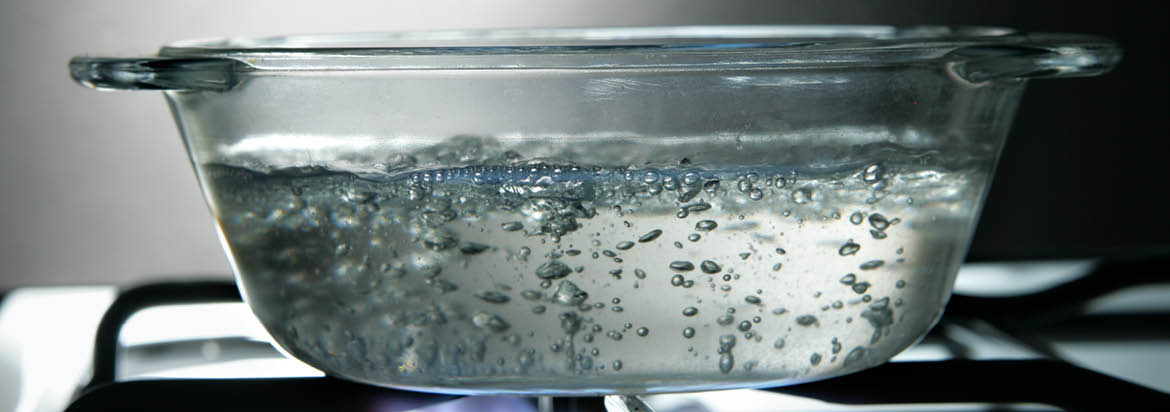This information is for the general public during a boil water notice. If you have questions about water quality, please call your water supplier.
A Boil Water Notice advises water system users that they should boil their tap water for drinking and other domestic purposes. It aims to protect the public from infectious agents that could be present in the drinking water supply.
Note: precautions may vary depending on the circumstances of the notice.
When is a Boil Water Notice Issued?
A Boil Water Notice advises water system users that they should boil their tap water for drinking and other domestic purposes. It aims to protect the public from infectious agents that could be present in the drinking water supply.
Water can become unsafe in a variety of ways, including events like flooding or equipment failure. At other times, routine water testing may suggest there is a problem with the water.
The most common reasons for boil water notices are high turbidity, microbiological contamination or inadequate disinfection.
Who issues a Boil Water Notice?
A boil water notice may be issued by the supplier, or Island Health may direct the water supplier to issue a notice to its customers.
* Always check with your local water supplier for the most up to date information.
What to do During a Boil Water Notice
Download printer friendly version: What to do during a boil water notice.
How to boil tap water
Tap water should be boiled for one minute. Use any clean pot or kettle. Kettles that have automatic shut offs are acceptable.
After boiling, let the water cool by leaving it on the counter or in the refrigerator in covered containers. After water is boiled it can be stored in food grade containers at room temperature or in the refrigerator.
You can bring back flavour by shaking water in a container, pouring the water between two containers, and/or adding a pinch of salt.
Boiled water is required for:
- Drinking purposes - All beverage concentrates such as fruit juice and iced tea where water is added.
- Food preparation - Washing fruits and vegetables that will not be cooked. Water used as an ingredient does not need to be boiled prior to use, providing it will be brought to a boil during the cooking process.
- Coffee Machines - Coffee machines usually produce water heated to about70 to 80 degrees Celsius, which is sufficient to destroy pathogens. This temperature must be maintained for a sufficient amount of time to ensure that all harmful organisms are destroyed. Let the coffee stand for at least five minutes before drinking.
- Brushing teeth - Daily oral hygiene such as cleaning dentures.
- Infant formulas - Formulas should always be prepared by using boiled tap water or bottled water that is boiled.
- Making Ice - It is important to note that freezing does not destroy most pathogens. Bacteria and viruses can survive in frozen products for long periods of time. Discard any ice made from contaminated or potentially contaminated water.
- Fruit and vegetable washing - Boiled water should be used to wash all produce that is to be eaten raw.
- Home canning - To be safe, postpone home canning until the boil water notice has been rescinded.
- Beer and wine making - To be safe, postpone beer and wine making until the boil water notice has been rescinded.
- Water for pets - Veterinarians that were consulted by VIHA recommend that drinking water for pets including dogs, cats, birds and reptiles should also be boiled. Information on water quality for livestock can be accessed at the BC Ministry of Environment water quality objectives website.
Immune-Compromised Individuals
People who are immune-compromised should always boil their tap water for the purposes above. Learn more about Water-borne infections in British Columbia.
When will the Boil Water Notice be lifted?
The Boil Water Notice will be lifted once the water is safe to drink.
After a Boil water Notice has been lifted:
- Flush all water-using fixtures for one minute.
- Run cold-water faucets and drinking fountains for one minute before using the water.
- Drain and flush all ice-making machines in your refrigerator.
- Run water softeners through a regeneration cycle.
- Drain and refill hot water tanks set below 45 C (normal setting is 60 C).
- Change any pre-treatment filters (under sink style and refrigerator water filters, carbon block, activated carbon, sediment filters, etc.).
Alternatives to Boiling Water
Although there are alternatives, not all of them will be feasible or practical in all situations. In part, it will depend on how much water you need and what you need it for. Safe alternatives to boiling water include:
- Using commercially prepared bottled water
- Obtaining water from an approved source that is not on a boil water notice
- If the water is clear and boiling water is not practical. You can use the following Bleach to Water Chart (PDF) or website as a guide to using bleach.
Important notes: Using bleach (chlorine) to disinfect water is not recommended for Public Notifications that are a result of high turbidity. Turbid water reduces the effects of bleach as a disinfectant. In addition, there may be pathogens present in turbid water that are not affected by bleach.
Bleach does not work well in killing off Cryptosporidium parasites. The amount of bleach needed to kill Cryptosporidium makes the water almost impossible to drink. If Cryptosporidium is in the water, boiling is the best way to make sure water is safe to drink.
Disinfection using unscented household bleach (5% chlorine) works best with warm water. Add bleach to the water, shake or stir for thorough mixing and then let it stand for at least 30 minutes before drinking.
A slight chlorine odour should still be noticeable at the end of the 30-minute waiting period if you have added enough bleach. If not, repeat the dosage and allow the water to stand an additional 15 minutes. If the water has too strong a chlorine taste, allow the water to stand exposed to the air for a few hours or pour it from one clean container to another several times.
Disinfection depends as much on the waiting time after mixing as to the amount of bleach used. The longer the water is left to stand after adding bleach, the more effective the disinfection process will be.
The following uses do not require boiled water but require additional cleaners or sanitizers:
Cleaning food contact surfaces - Food contact surfaces are all those surfaces that food comes into contact with during the food preparation process. These include counter tops, cutting boards and chopping blocks. Food contact surfaces should be washed with clean water and then sanitized using an acceptable sanitizing agent. Sanitizing agents for food contact surfaces include unscented household bleach, iodophors, and quaternary ammonia compounds.
To prepare stock bleach solutions add 2-4 ml of 5% bleach per litres of water (1 tablespoon per gallon). This will make a 100 to 200 ppm chlorine solution.
Hand washing
Using warm water and soap should be sufficient. Ensure hands are thoroughly dried using paper towel. Use of alcohol sanitizer following hand washing will provide additional safety.
Dishwashing by hand
Dishes washed by hand should be sanitized for two minutes in a separate sink using a bleach solution (2-4 ml of bleach per liter of water or 1 tablespoon per gallon) after the dishes have been washed and rinsed. The dishes should then be left to air dry prior to being used. Attempting to wash and sanitize dishes in the same sink at the same time is not recommended because soap, grease and food particles interfere with the sanitizing process.
Mechanical dishwashers
Residential home-style dishwashers may not provide a high enough temperature to destroy all pathogens. Dishwashing units that reach 82 degrees Celsius (180 Fahrenheit) for twelve seconds (or an equivalent time-temperature relationship) during the final rinse cycle will destroy pathogens. Read the dishwasher sanitization equivalent memo (PDF) on dishwashing time-temperature relationships.
To optimize dishwasher disinfection you should consider:
- using the highest temperature setting possible and
- using the heated dry cycle on the dishwasher.
All other water should be boiled. Simply put, any water that has a chance of being ingested should be boiled.
Turbidity
Turbidity is a laboratory measure of the relative clarity or cloudiness of water. It is an indirect measure of the suspended particles in the water and is a general measure of the scattering and absorbing effect that suspended particles have on light. Turbidity–causing particles commonly arise from the weathering of rocks and soils during rainfall events or during rapid snow melt events, which are common during the fall and winter periods in the Island Health region. Turbidity–causing particles can also be present in the summer due to the growth of biological organisms such as algae, cyanobacteria or zooplankton. The higher the turbidity level, the cloudier the water looks. Turbidity is measured in nephelometric turbidity units (NTU). At 1.0 NTU the water is clear, at 5.0 NTU cloudiness may be noted and at 10 NTU the water is visibly cloudy.
Drinking Water
High turbidity can interfere with the disinfection of drinking water by causing ultraviolet light and/or chlorination processes to become ineffective in destroying pathogens. Turbidity events can also be linked to an increase of disease causing micro-organisms in the source water. The turbidity objective for drinking water from surface water supplies is less than 1.0 NTU.
The numerous potential sources of turbidity makes it challenging for a water supplier to determine the specific types of particulate matter in the water and the corresponding health risks associated with turbidity. Water suppliers are expected to apply a precautionary approach to protecting the public’s health and provide public notification to their customers accordingly.
As turbidity levels increase water suppliers and Island Health Drinking Water Officers will assess the situation. Based on the assessment public notices may be communicated to the water system users
A Boil Water Notice (BWN) is issued when there is an increased turbidity above 1.0 NTU or there is an adverse microbial health risk associated with water use.
To help determine when it is appropriate to issue a water notice, Island Health has adopted the Ministry of Health Decision Tree for Responding to a Turbidity Event in Unfiltered Drinking Water.
Drinking Water Officers expect water suppliers using surface water to:
- Include turbidity as part of their ongoing water quality monitoring program.
- Include standard operating procedures within their emergency response plans to respond to turbidity events.
- Use the Ministry of Health Turbidity Decision Tree to help make decisions during turbidity events.
- Communicate with the drinking water officer and their customers during turbidity events.
Resources for Food Establishments
Boil water information for food establishments




